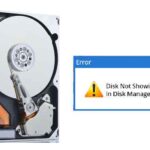Backing up your enterprise data is the best practice when it comes to managing any IT system.You need to ensure that you can resume your normal workflow by restoring the data as soon as possible in any instance of a disaster, manual error, data breach, or cyberattack.In terms of Salesforce CRM, this is a very important thing like any other technology ecosystem. This is more so because the CRM acts as a living system with hundreds of thousands of users who may enter records or change the fields every minute of its working.
Why use Salesforce backup solutions
It is not just the only reason that there is a possibility of Salesforce getting deprived of existing data is why you need Salesforce data backup. The major cause of data loss maybe is any of the following too.
- Mass data import – Using some tools like data loaders. Administrators can import or modify a huge number of records at a time. If any mistake is made at this point, the records for the field values can be fully wiped off from the CRM.
- Rogue automation- Deploying any buggy Apex trigger or process builder that overrides data may result in mass data loss or data correction.
- User error – There can be some common mistakes from the users or the admins, which may end up in data loss at any time.
Data and metadata
If you are thinking of setting up the Salesforce backup, one may probably think of backing up the records in the system. However, it is also important to consider metadata backupstoo. Metadata is the information about the Salesforce configurations,which may include the features like the page layouts, custom fields, Apex triggers, and other parts of the Salesforce which you may have customized. Metadata backup is as important as the data backup, as without a proper framework. Your data backups may go in vain in case of the need for a restoration.
Salesforce data backup solutions
Salesforce has many native solutions for salesforce data backup. All these solutions can be used at the bare minimum to take a copy of your data. However, Salesforce native methods may not provide much in the way of automation.
Salesforce Data backup
Exporting of data will let you perform data backup manually to run a scheduled backup for the data using Salesforce. This will also help organize your data into different sets of CSV files.
Data loader– It will allow you to export data using a data loader. It is an option that requires some manual steps and can give you better control over the data you export.
Report export– it is another simple way to export data to Salesforce using its interface for exporting reports.
Backing up metadata
Changesets can be used to copy data from the Salesforce org from one Salesforce org to another, like a sandbox org for developer org for production, etc.
Sandbox refresh – With the help of Sandbox refreshment, you can essentially take a fresh copy of the production org.
Force.com migration tool is a more advanced tool that can be used with a CLI to migrate the changes from the given org to another org.
It is also crucial to discuss that in case of any data loss disaster, and you don’t have any backup, Salesforce offers a data recovery service that costs about $10000. However, it may take many weeks to run it and restore the data and metadata fully.
Third-party backup solutions
If Salesforce offers some native solutions, people may wonder why we must consider third-party Salesforce data backup solutions.However, suppose you already know the tools mentioned in the Salesforce recovery service. In that case, you may also know that if you need to restart a particular location and type due to an issue, there are ten thousand reasons for the same, which is why third-party solutions are out there. There are many applications to take care of all the heavy lifting in exporting and restoring data boosters. We will further look into some of such data restoration apps.
Backup 500– It is a market leader in the case of Salesforce data backup. More than 3000 customers are using the service, and it offers a comprehensive data backup and recovery solution for Salesforce. This is available at the App Exchange marketplace.
Spanning backup– it is another establish Salesforce backup service out there. The provider is in service from 2010 onwards and offers a comprehensive platform and backup for G-Suite and Microsoft 360. You can download it from App Exchange.
Gearset– Gearset is another leading Salesforce data backup DevOps platform. It offers comprehensive data as well as metadata backup on Salesforce. You can download it from the official Gearset website.
Odaseva– Odaseva is looking at the Salesforce data backup from a different angle. They are offering services as enterprise Salesforce data management. Along with many other offerings, it includes comprehensive data backup and data compliance, and data privacy tools. You can get this also from the App Exchange marketplace.
Cloudy– It functions as a backup that offers services for various platforms, including Salesforce. You can get this from AppExchange, and it can also be used for comprehensive data backup tasks.
After going through this article, you may be feeling more confident about the backup of Salesforce but still wondering which solution is right for your Salesforce! The answer for this may depend on your unique use case. To ensure which service will be ideal for you, one needs to answer some questions as
- How much dependency your business or services has on Salesforce?
- What may be the restoration process in case of any data or metadata loss?
- How long may this process take, and what will be the impact of it on your business?
- How much Salesforce deployment are you planning to do every month?
Deployment may have some risks associated with it in terms of data or metadata loss. The more deployment you try to carry out, the higher the risks may be.Native Salesforce backup solutions available may be suitable for some types of businesses. Still, it is recommended to check out paid solutions, too, as these are way better than the free options.
Check out 6 cryptocurrency projects to keep an eye out for


















